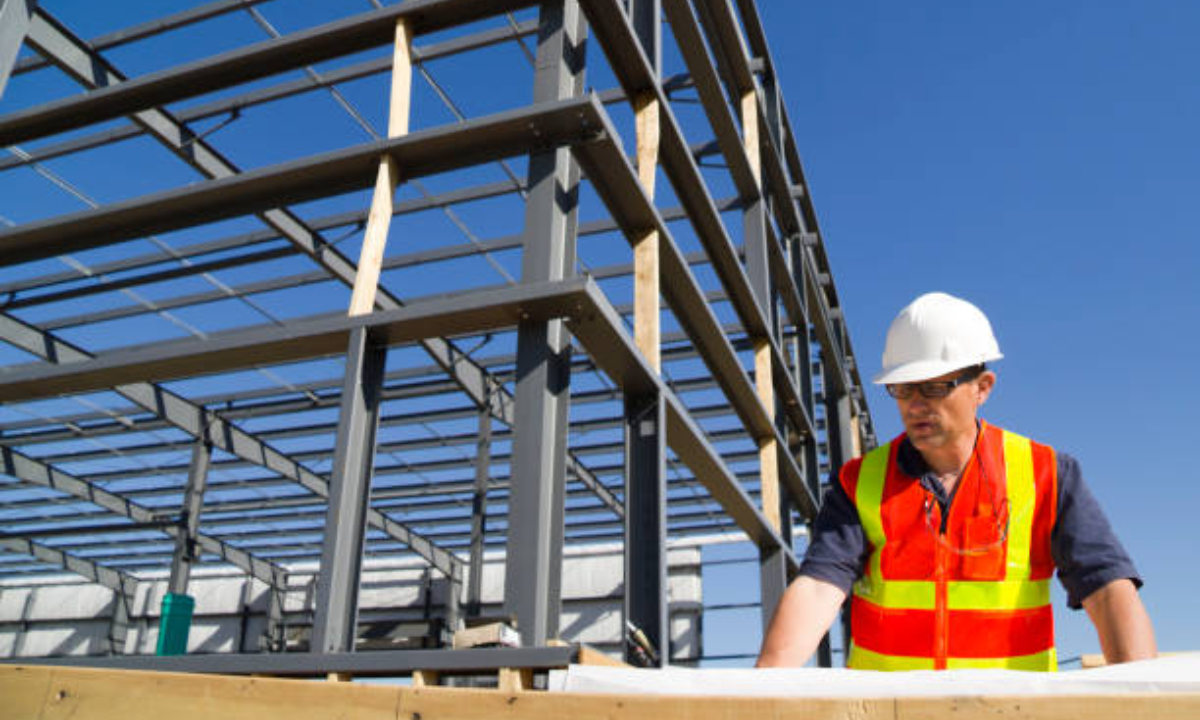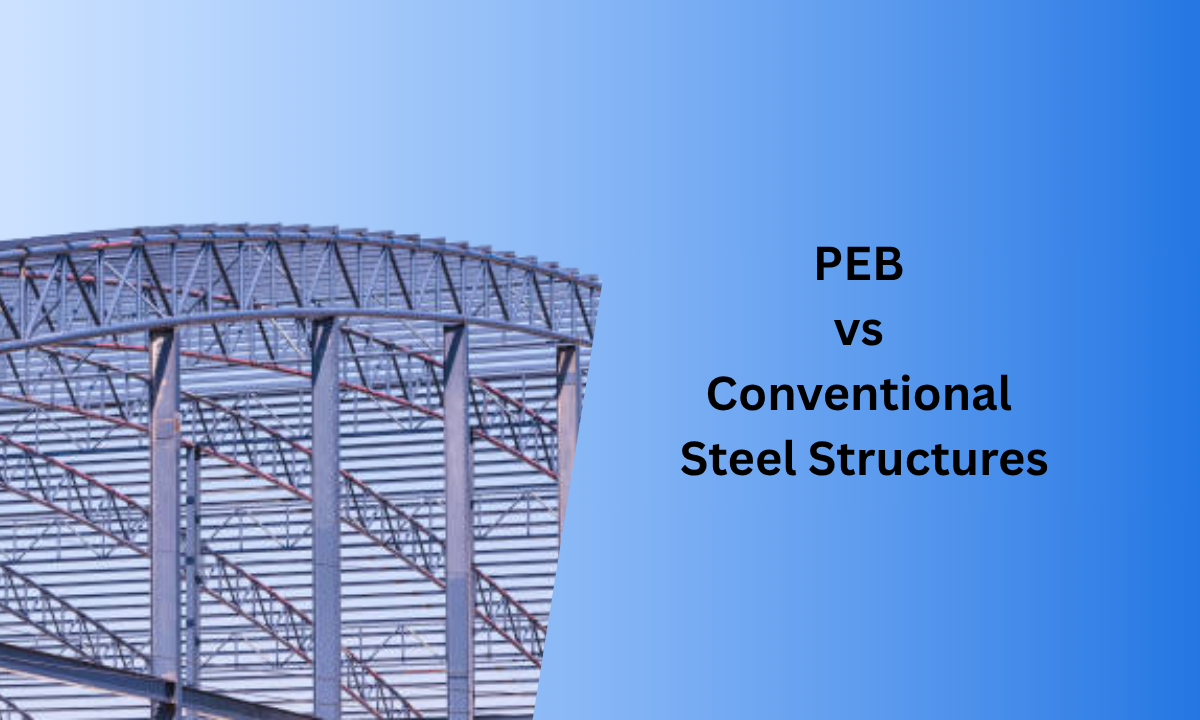The construction industry in India is changing fast. One big reason is the rise of Pre-engineered Buildings (PEBs). But many people still wonder – “Should I choose a PEB structures or go with a conventional steel structure?”
In this blog by Shobha Globs, a trusted Pre-engineered Building Manufacturer in India, we will compare both options in simple words so you can decide easily for your next project.
What is a Pre-engineered Building (PEB)?

A Pre-engineered Building is made with steel parts that are designed and manufactured in a factory. Later, these parts are taken to the construction site and assembled using bolts.
Where are PEBs used?
- Warehouses
- Factories
- Cold storages
- Workshops
- Commercial buildings like showrooms and malls
What is a Conventional Steel Structure?
A Conventional Steel Structure uses steel beams and sections that are mostly fabricated on the construction site or partially in workshops. Workers cut, weld, and fit them piece by piece at the site.
Where is it used?
- Multi-storey buildings
- Complex industrial plants
- Heavy structures needing custom designs
Main Differences Between PEB and Conventional Steel Structures
Let’s look at how they are different in terms of design, cost, time, and quality.
1. Design and Engineering
PEB:
Design is done using software with standard templates. This makes it faster and uses less steel because the design is optimized.
Conventional:
Designs are made from scratch by engineers. It often uses more steel because optimization is harder.
Which is better?
PEBs are better for standard designs as they save time and material.
2. Fabrication Process
PEB:
All parts are made in a factory with strict quality checks. They arrive at the site ready to install.
Conventional:
Fabrication is done mostly on-site with more manual work, like cutting and welding.
Which is better?
PEBs offer better quality because of factory production.
3. Construction Time
PEB:
Construction is much faster because all parts are ready to assemble.
Conventional:
Takes longer as most work is done on-site and depends on weather and labor availability.
Which is better?
PEBs can reduce construction time by 30-50%.
4. Cost
PEB:
Generally cheaper because of optimized design, less labor, and faster construction.
Conventional:
More expensive due to extra steel use, more labor costs, and longer project time.
Which is better?
PEBs usually cost 10-20% less than conventional steel structures for similar buildings.
5. Flexibility in Design Changes
PEB:
Not easy to change once manufacturing starts.
Conventional:
More flexibility to make design changes during construction.
Which is better?
Conventional structures are better for complex designs needing changes.
6. Quality and Safety
PEB:
Factory-made parts have better precision and coatings. Bolted connections are strong and safe.
Conventional:
Quality depends on the on-site workers’ skills. There is a greater chance of errors during welding and fitting.
Which is better?
PEBs offer consistent quality and safety.
7. Maintenance and Durability
PEB:
Needs less maintenance because of good coatings and fewer welds.
Conventional:
Needs regular checking of weld joints. The risk of rusting is higher if paint is not applied well.
Which is better?
PEBs are easier to maintain over time.
Comparison Table: PEB vs Conventional Steel Structures
| Feature | PEB | Conventional Steel Structure |
| Design | Standard and optimized | Custom, more manual |
| Fabrication | Factory-made | Mostly on-site |
| Construction Time | Faster | Slower |
| Cost | Lower | Higher |
| Flexibility | Less | More |
| Quality | High | Depends on site work |
| Maintenance | Less needed | More needed |
When Should You Choose PEBs?
PEBs are perfect for:
- Warehouses
- Factories
- Workshops
- Cold storages
- Aircraft hangars
- Large halls or showrooms
If your project needs fast construction, cost savings, and standard designs, PEBs are the best choice.
When Should You Choose Conventional Steel Structures?
Conventional steel is better for:
- High-rise buildings
- Complex industrial structures
- Projects where design changes are expected during construction
- Heavy structures need special designs
Why Are PEBs Becoming Popular in India?
In recent years, PEBs are preferred because:
- Businesses want buildings ready quickly.
- Construction quality is reliable.
- Less labor is needed on-site.
- Steel is recyclable, making PEBs eco-friendly.
- They reduce overall project costs.
Common Myths About PEBs
Myth 1: PEBs are only for temporary buildings.
Truth: They can last over 20-30 years with good maintenance.
Myth 2: PEBs are boring in design.
Truth: Modern PEBs can look stylish and attractive.
Myth 3: PEBs can’t take heavy loads.
Truth: They can be designed to handle heavy machinery and industrial equipment.
How to Choose the Right Option for Your Project
If your building is standard, like a warehouse or factory, PEBs is the smartest choice, save time and money.
If your building is complex, multi-storey, or needs changes during construction, conventional steel structures may be better.
The best way is to talk to an experienced Pre-engineered Building Manufacturer in India like Shobha Globs. They can guide you based on your budget, project size, and design needs.
Final Thoughts
Both PEBs and conventional steel structures have their uses. The right choice depends on your project type, design requirements, and how soon you want the building ready.
If you’re planning a warehouse, factory, or industrial shed, a PEB is usually the smarter choice. It’s faster, costs less, and quality is assured.
Looking for a Trusted Pre-engineered Building Manufacturer in India?
At Shobha Globs, we design and build high-quality PEBs across India. From design to erection, we ensure your project is completed on time, within budget, and with top quality.
Key Takeaways
- PEBs are fast, economical, and ideal for standard structures.
- Conventional steel structures offer flexibility for complex projects.
- Always choose the right manufacturer to guide your decision.

